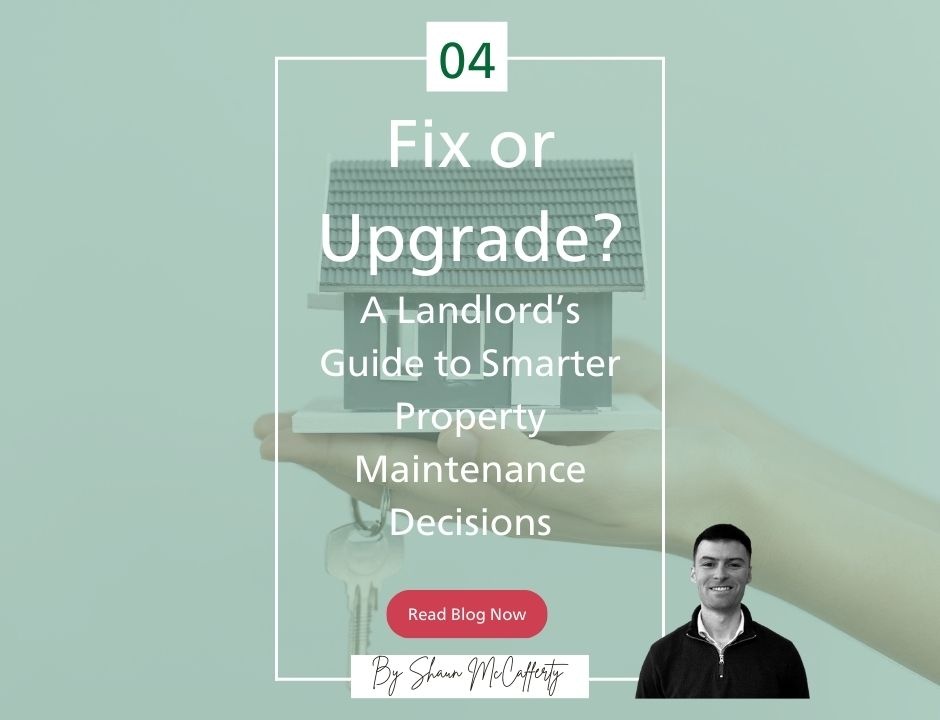Fix or Upgrade? A Landlord’s Guide to Smarter Property Maintenance Decisions in Edinburgh
Albany Lettings in Edinburgh
30th April 2025

As a landlord, one of the most common dilemmas you’ll face is deciding whether to fix an existing feature or invest in an upgrade. While quick fixes may seem cheaper in the short term, strategic upgrades can boost rental income, tenant satisfaction, and even property value, especially in Edinburgh’s highly competitive rental market.
In this article, we break down the key indicators for when it’s time to upgrade versus when a repair will suffice and the potential benefits of making the right call.
1. The Lifespan Factor: Know Your Fixtures and Fittings
Every component of a rental property has a typical lifespan. For example:
- Boilers: 10–15 years
- Carpets: 5–7 years
- Kitchens/Bathrooms: 10–20 years depending on quality
- Appliances: 8–12 years
If a feature is nearing or past its lifespan, it’s often more cost-effective to upgrade than to repeatedly patch things up.
2. Repair Costs vs Upgrade ROI
Ask yourself:
- Are you spending more than 50% of the replacement cost on frequent repairs?
- Will an upgrade allow you to increase rent or attract better tenants?
For example, upgrading to energy-efficient appliances might cost more upfront, but could reduce tenant utility bills, increasing your property’s appeal in eco-conscious Edinburgh.
3. Tenant Expectations and Market Trends in Edinburgh
Modern tenants are looking for properties that are:
- Energy efficient
- Aesthetically appealing
- Functional and safe
In areas like Bruntsfield, Morningside and Stockbridge rental competition is high. If your property lags behind market standards, upgrading could help you attract and retain high-quality tenants and potentially justify a rent increase.
👉 Tip: Stay informed with local letting experts (like Albany) to understand what’s trending in the Edinburgh rental scene.
4. Compliance and Safety Regulations in Scotland
Sometimes, upgrading isn’t a choice — it’s a legal requirement.
You may need to upgrade if:
- Your property no longer meets Scottish housing safety standards
- You're required to comply with EPC minimum ratings, fire safety measures, or electrical testing regulations
Recent changes in Scottish legislation mean all rental properties must meet the Repairing Standard, which includes functional smoke and heat alarms, electrical safety checks, and more. Ignoring compliance could lead to hefty fines or even bans on letting.
5. The Hidden Costs of Frequent Fixes
Quick fixes often seem cost-effective, until they start piling up. Multiple call-outs not only add to your expenses, but also frustrate tenants and can shorten tenancy lengths.
Long-term benefits of upgrading include:
- Fewer emergency repairs
- Higher tenant retention
- Better reviews and recommendations
- Reduced void periods
6. When It Makes Sense to Repair
Not every issue requires a replacement. Opt for a repair when:
- The issue is isolated and not part of a recurring problem
- The component is within its expected lifespan
- The fix is quick, inexpensive, and safe
- You're planning to sell soon and don’t want to over-invest
Conclusion: Take the Long View
Smart property management means balancing short-term costs with long-term gains. In Edinburgh’s dynamic rental landscape, fixing minor issues is fine but investing in thoughtful upgrades can lead to higher yields, better tenant experiences, and lower ongoing costs.
Not sure whether to fix or upgrade your Edinburgh rental property?
📞 Contact Albany today for expert landlord support, local market advice, and tailored property management solutions designed to maximise your return.
